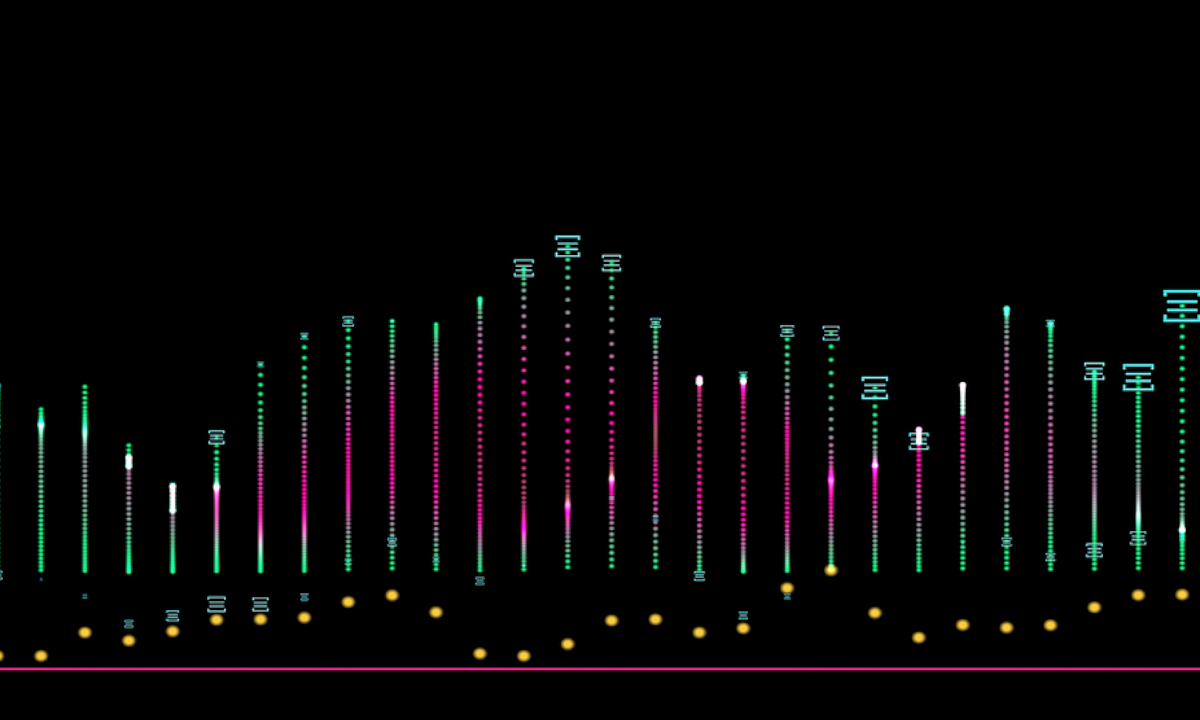
GEORGE TOWN, Cayman Islands, April 2, 2025 /PRNewswire/ — Ostium , the pioneering leveraged trading platform for Real World Assets, today announced the launch of its Ostium Points Program, a competitive system tracking user activity and engagement across the platform designed to help incentivize trading, referrals, and liquidity provisioning across its ecosystem. Today the platform enables users to long or short stocks, commodities, indices and currencies. The program officially launches on Monday, March 31, 2025, with an initial points distribution of 10 million points allocated retroactively to early adopters who have been active on the platform prior to the program launch. Retroactive points emphasize recognizing users on Ostium’s public Mainnet and private Mainnet, testnet, and pre-testnet phases. Visit ostium.app/points to check your points allocation. 500,000 points will be distributed weekly based on user activity. Weekly points distribution may increase and available points will be communicated at the start of each week. The program is designed to recognize early adopters while creating an engaging competitive environment for all participants. By acknowledging users who contribute to the ecosystem through their trading activity, referrals, and liquidity provision, Ostium aims to further strengthen its community of traders and liquidity providers. The Ostium Points Program features the following components: Real-time score tracking: Scores update immediately when users trade or provide liquidity. These scores are converted into points at the end of every week. Weekly conversions to points: Every Sunday at midnight UTC, accumulated scores convert to points based on relative participation levels. Score tracking then resets for the new week. Dual scoring system: The program tracks two types of scores: Trading/Referral scores and Liquidity Provision scores. While there are two score categories, they combine into a single points total. Competitive leaderboards : Users can monitor their real-time ranking against other participants in both score categories and in the global points leaderboard. Referral benefits: The program allocates 1 trading score for every 5 trading scores generated by referred users. Users who sign up with a referral code receive a 5% boost on all trading scores. Community contributions : A small portion of weekly points is optionally reserved for substantial open-source contributions to the protocol, such as critical bug reports and technical research. The Points Program represents the next phase in Ostium’s community development strategy, building on its mainnet launch that brought access to global macro markets for the first time onchain. The Ostium Points Program begins March 31, 2025, at 10:00 AM ET. Users can view their point allocations and track their scores on the platform’s interface. New points are allocated weekly on Sundays at midnight UTC. For more information about the Ostium Points Program, visit www.ostium.app/points. About Ostium Ostium is the leading leveraged trading platform for Real World Assets offering the first onchain long/short exposure to markets like the Nasdaq, Gold, and Oil. The platform enables users to trade stocks, commodities, indices and currencies. Ostium was founded by alumni from Harvard, Bridgewater, and BlackRock and is supported by top-tier investors such as General Catalyst, LocalGlobe, Susquehanna (SIG), GSR, and Alliance DAO. Note: The Ostium Points Program is designed for tracking engagement and participation. Points have no monetary value, cannot be transferred, sold, or exchanged for any consideration, and do not represent any ownership interest, investment opportunity, or any right to any future rewards. Ostium reserves the right to modify or terminate the program at any time.
Bitcoin World
You can visit the page to read the article.
Source: Bitcoin World
Disclaimer: The opinion expressed here is not investment advice – it is provided for informational purposes only. It does not necessarily reflect the opinion of BitMaden. Every investment and all trading involves risk, so you should always perform your own research prior to making decisions. We do not recommend investing money you cannot afford to lose.
Bitcoin’s Fate Hinges on This Critical ‘Dead Cross’ Signal — What’s Next for BTC?

Bitcoin has seen a notable price consolidation over the past few weeks, trading between the $84,000 and $86,000 levels. Despite the initial surge in price, the cryptocurrency has faced a decline of 3.7% in the past week and nearly 10% in the past month, signaling a period of stagnation in its upward momentum. At the time of writing, Bitcoin is priced at $84,263, raising questions about the future trajectory of the asset as investors await a clear direction. Related Reading: Bitcoin Reverses Losses—Analysts Say $100K Is On The Horizon The Dead Cross: A Signal for a Potential Price Drop? BilalHuseynov, a contributor to CryptoQuant’s QuickTake Platform, has offered valuable insights into Bitcoin’s current market behavior. In his latest post, titled “Will Bitcoin Drop Anymore?”, he sheds light on key on-chain metrics that may help predict the next movement in Bitcoin’s price. His analysis revolves around the behavior of two important metrics: Realized Cap and Thermo Cap, particularly focusing on their recent crossover, which could have significant implications for Bitcoin’s price direction. Huseynov explains that the Realized Cap metric, which tracks Bitcoin’s total value based on its last movement price, gives a more accurate representation of the network’s economic value. On the other hand, Thermo Cap measures the total capital introduced into the BTC network through mining. When Thermo Cap crosses below Realized Cap — known as a “Dead Cross” — it signals that Bitcoin might be heading toward a price decline. Huseynov points out that this situation is unfolding and predicts that BTC’s price could drop to as low as $75,000 if the second Dead Cross materializes. Is The Bitcoin Market Condition Still Healthy? In addition to Huseynov analysis, another CryptoQuant’s analyst Banker has provided insight into the Coin Days Destroyed (CDD) metric, which tracks the movement of long-dormant BTC. Since March 2025, the CDD 60-day moving average has remained low, indicating that long-term holders are not selling their Bitcoin in large quantities. This behavior is often a sign of confidence among seasoned investors, suggesting that they believe in Bitcoin’s long-term potential. Related Reading: Is The Bitcoin Bull Run Over? Watch This Key Price The absence of major CDD spikes indicates that the market is not experiencing extreme price volatility, which could signal a period of consolidation or eventual upward momentum as selling pressure remains low. This development also coincides with recent reports of short-term holders exhibiting less selling pressure after their initial move of taking profits. Decrease in selling pressure by 1-3 month holders “These holders appear to show reduced activity in the market after taking profits from their short-term trades.” – By @CryptoOnchain Read more ⤵️https://t.co/ThyGe7pjPO pic.twitter.com/0minPLfiWM — CryptoQuant.com (@cryptoquant_com) April 1, 2025 Featured image created with DALL-E, Chart from TradingView Bitcoin World

Could Altcoins Like Ethereum Break Free from Bitcoin’s Influence?
The cryptocurrency market is showing signs of potential transformation as altcoins exhibit a budding independence from Bitcoin’s dominance. As institutional investors begin to identify value in altcoins, we are witnessing Bitcoin World











